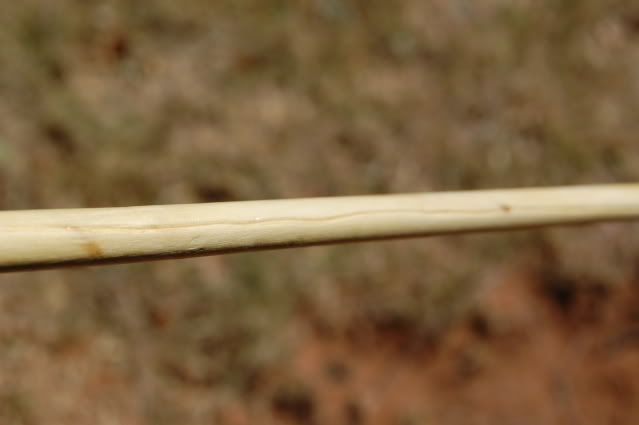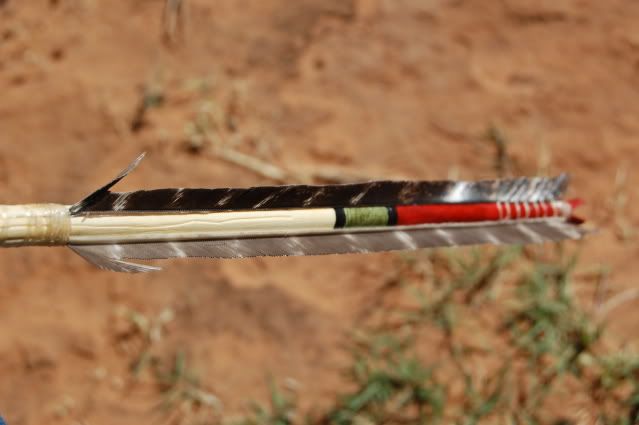I've made many arrows with lightning marks. In my experience, they do NOT affect straightness or any other physical property of the arrow in any significant way. Make 100 arrows with lightning marks and you'll come to the same conclusion. Make 3 with lightning marks and you will not gain any insight whatsoever.
Most lightning marks are not straight, they are wavy. How do you think that this logically keeps the arrow any straighter? Jim Hamm makes his lightning marks with a wooden block with a nail or screw tip sticking out of a groove in the block. They appear to be deep and straight. Deep and straight are not characteristics of lightning marks. They are characteristic of flutes. Flutes have been shown to maintain the strength of a material while removing mass, like a flute down the blade of a sword. I have not seen any test results that show that arrows benefit from the addition of these flutes, however.
Lightning marks are aesthetic. They symbolized power. The power of lightning. Perhaps they symbolized other things in different cultures but they are symbolic and intended to be symbolic, imparting a "spirit" of power to the arrow. They are good "medicine".
Laubin gives an explanation of lightning grooves and their purpose in his book, "American Indian Archery" on page 113. He says,
"Old Sioux warriors I knew insisted that the grooves in the shaft represented lightning and made the arrow fly straight. In fact, some insisted an arrow would not fly straight unless so treated." He goes on to say,
"They also said that the grooves kept the shaft from warping, and it may have had some deterrent effect." Also,
"It is certain that the grooves had nothing to do with bleeding an animal, and it would seem that they were mainly ceremonial."Laubin was open to the idea that the grooves may have been useful in preventing warping, but he knew he could not prove it. He knew it might just be coincidence that some of his grooved arrows stayed straighter than some of his ungrooved arrows. In any case he concludes,
"But no arrow artificially straightened in the first place, as the Indians had to do, will stay straight forever, although the grooves may have delayed warping."

